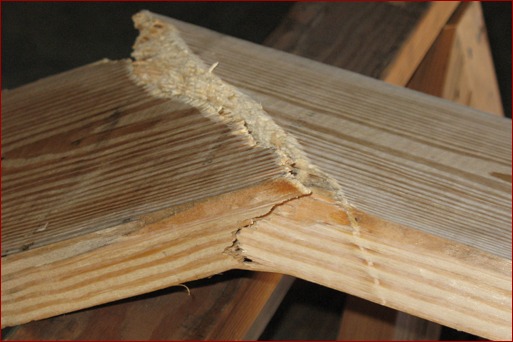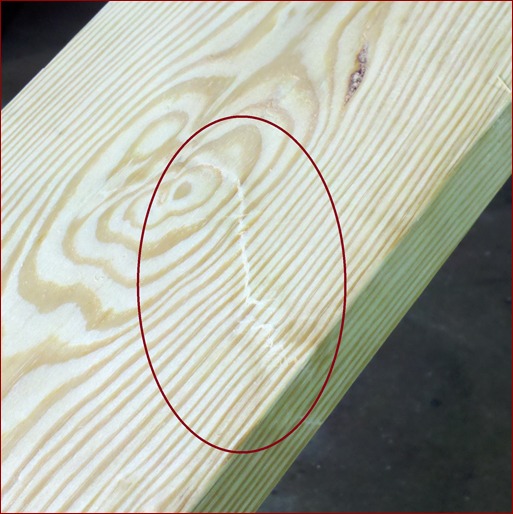Planks and Decking
Scaffold Plank Price-Buyers:
Beware of the Loophole
When buying something new, you expect (insert your shiny new toy here) to work, and to be in fantastic condition and ready to handle the job it was intended to do. You’ve done the research, examined the features and found the best deal. Now, it’s yours. You are the one who puts the initial miles on the new car, breaks in the leather on that soft, comfy sofa or plugs in the burly power tool for the first time.?? It’s a good feeling. After all, it is new, and you finally get to use it.
Now, how would you feel if something didn’t quite work right? Perhaps the power cord on the tool was damaged, a spring in the couch was broken or, worse yet, you don’t know a problem exists until after you use it. You would probably be upset. Maybe this wasn’t such a good deal. A return at the customer service center would ensue, and time would be lost. I’m sure most of us have been down this road.
Well, take a seat before you read this, because I am about to tell you that some of the equipment you are buying for your company may not be useable, since it is non-compliant. Yes, that’s right: Even though it is brand, spanking new, it’s non-compliant.
I am talking about wood scaffold planks. Depending on the manufacturer, some of your new, solid sawn wood planks may not be useable, because they are non-compliant.
Every plank may be brand new and untouched before it reaches the jobsite, but what I am referring to is what happens before it ever gets to you.
A clause exists in the respective grade rules for lumber, regardless of species, that allows manufacturers to have up to 5 percent of the scaffold plank they ship to you to be off-grade. For example: On a truckload of 16-foot wood planks, close to 40 pieces may have defects that make it unsuitable for use as scaffold plank. This is considered “acceptable” by these standards.
What the grade states
For Southern Yellow Pine DI65 Scaffold Plank, the Southern Pine Inspection Bureau grading rules (1994 e. para. 132) state, “The grading of lumber cannot be considered an exact science, because it is based on either a visual inspection of each piece and on the judgment of the grader, but these rules are sufficiently explicit to establish a maximum of 5 percent below grade as a reasonable variation in judgment between quality supervisor and graders.”
Lumber graders visually inspect the material for certain characteristics and defects as it passes in front of them on a grading chain, before it can be stamped as scaffold plank. Many features are considered: the slope of grain, growth rings, density, knot size, splits, timber breaks, compression wood – the list goes on. Some planks make the grade, and some do not. Plank after plank, and shift after shift. Something is bound to be missed. The concession in the grading rule is making an exception for human error and allowing this to be passed along to the user.
Although solid sawn wood planks are required to be of Scaffold Grade as per OSHA and ANSI requirements, the grade allows for the offage, making it “acceptable” from the manufacturer’s perspective. It is a loophole that directly affects plank buyers and can be used as an irresponsible and unsafe cost-cutting measure.
What does this mean for you?
Here is a possible scenario: You buy new scaffold planks from ABC Plank Manufacturer, because the price is attractive. Eleven months later, a plank from ABC Plank Manufacturer fails, and an accident occurs. ABC Plank Manufacturer is named in the suite as a liable party manufacturer. Their defense is that 95 percent of the shipment was within the “scaffold grade.” The plank that happened to fail was in the allowable 5 percent off grade. That good deal you received isn’t so sweet anymore.
|
|||
As stated in the scenario, the worst case scenario that may occur is when an off-grade plank fails under the intended load, causing an injury or accident. Off-grade plank can equate to loss of useable inventory as well as a monetary loss. If the defects are obvious upon receipt, any plank that does not meet the grade should be removed from service. Should you sustain a loss on material that does not meet the grade, you may have zero recourse as the manufacturer may hang its hat on the fact that the subjective 5 percent is allowed.
The qualified or competent person in your scaffold yard will be able to inspect damage from normal wear and tear, but how does he assess off-grade planks that are new? Your crews are not certified scaffold plank lumber graders, nor should they be. The lumber grading should be left in the hands of the mills producing scaffold plank as long as they are producing 100 percent scaffold grade material. At first, it may seem that your hands are tied; however, steps are available to help you take to protect yourself and your company.
What you can do
Rest assured there are manufacturers that provide 100 percent scaffold grade plank. The challenge is identifying which ones. Evaluate your supplier and know what he produces. Take a tour at the facility and see for yourself how the material is processed. Make a concerted effort to find out what the focus is: cost, averages, max output, quality, safety? You may be surprised by what you find. A good rule of thumb is “Price-Buyer Beware.” If most manufacturers are $18 per plank and the “good deal” manufacturer is at $13 per plank, run the other way. A deviation of $1 to $2 per plank is normal.
On-grade solid sawn wood scaffold planks are workhorses; they have been for years and will continue to be. They perform well, are readily available and are designed to take the daily stress required in the field. Although the likelihood that your planks will fail under intended load is slim (by design, they should have a 4:1 safety factor) it is imperative to know the quality control processes of your plank supplier, the guarantee your supplier provides and his approach to safety in the industry.
If the goal is the cheapest, well, we know how that ends. After all, we’re not talking about construction grade 2 X 4s that can be easily discarded and replaced; we’re talking about spanning heights with scaffold planks that should safely support our industry and fellow co-workers.


